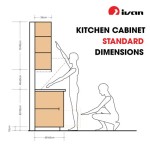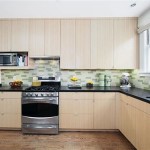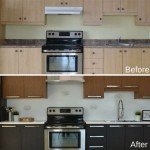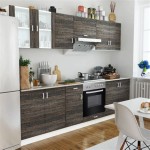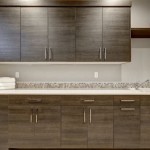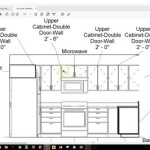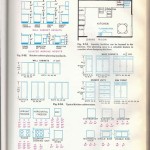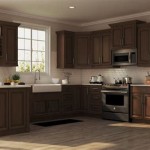Understanding Kitchen Cabinet Door Hinges: A Visual Guide
Kitchen cabinet door hinges are essential components, often overlooked yet crucial for the functionality and aesthetics of kitchen cabinetry. These small metal mechanisms allow cabinet doors to swing open and closed smoothly, and their selection can significantly impact the overall look and feel of the kitchen. A comprehensive understanding of hinge types, their applications, and installation variations is vital for both homeowners and professionals involved in kitchen renovations or new construction projects. This guide provides a visual exploration of common kitchen cabinet door hinges, explaining their characteristics and practical uses.
The selection of appropriate hinges depends on several factors, including the cabinet door style (overlay, inset, or partial overlay), the frame construction (face-frame or frameless), the desired level of adjustability, and the preferred aesthetic. A mismatch between the hinge type and the cabinet construction can lead to functional issues, such as doors that don't close properly, rub against the cabinet frame, or fail to align seamlessly. This article will visually categorize and explain the features of various hinge types to facilitate informed decision-making.
Types of Kitchen Cabinet Door Hinges
Several distinct types of kitchen cabinet door hinges cater to different cabinet styles and functional requirements. Each type possesses unique characteristics that influence its installation and performance. Understanding the nuances of each hinge type is critical for selecting the optimal hinge for a specific application.
1. Concealed Hinges (European Hinges):
Concealed hinges, also known as European hinges, are immensely popular in modern kitchens due to their clean aesthetic and adjustability. These hinges are hidden from view when the cabinet door is closed, offering a sleek, minimalist look. They are primarily used with frameless cabinets (also known as Euro-style cabinets), although specialized versions exist for face-frame cabinets. The defining characteristic of concealed hinges is the cup that is mortised into the back of the cabinet door. This cup houses the hinge mechanism, and the hinge arm attaches to the inside of the cabinet box. Concealed hinges offer a high degree of adjustability, allowing for precise alignment of door gaps and ensuring smooth operation. Adjustments are typically made via screws that control the hinge's vertical, horizontal, and depth positions.
Within the category of concealed hinges, several sub-types exist, differentiated by their overlay type: full overlay, half overlay, and inset. A full overlay hinge is designed for doors that completely cover the cabinet frame. A half overlay hinge is used when two doors share a center stile, and each door covers half of the frame. An inset hinge is for doors that are flush with the cabinet frame. Selecting the correct overlay is crucial for proper door alignment and functionality.
Another key feature of concealed hinges is the option for soft-close functionality. Soft-close hinges incorporate a damper mechanism that prevents the door from slamming shut, reducing noise and wear and tear on the cabinet. These hinges are highly desirable for their added convenience and premium feel.
2. Face-Frame Hinges:
Face-frame hinges are specifically designed for cabinets with a face frame, which is a solid wood frame attached to the front of the cabinet box. Unlike frameless cabinets, face-frame cabinets require hinges that attach to both the door and the frame. Several types of face-frame hinges exist, each with its own mounting style and aesthetic.
Butt Hinges: Butt hinges are a classic hinge type consisting of two rectangular leaves joined by a central pin. One leaf is mortised into the cabinet door, and the other is mortised into the face frame. Butt hinges are typically visible when the door is closed, and they are available in various finishes to complement the cabinet hardware. While traditionally non-adjustable, some modern butt hinges incorporate slight adjustability.
Mortise Hinges: Similar to butt hinges, mortise hinges also require mortising into both the door and the frame. However, they often feature more decorative designs and are available in heavier-duty versions for larger doors. The mortising process can be more intricate than with butt hinges, requiring precise measurements and tools.
Surface-Mounted Hinges: Surface-mounted hinges, as the name suggests, are mounted directly onto the surface of both the door and the face frame, without requiring mortising. This makes them easier to install than butt or mortise hinges, but they are also more visible. Several styles of surface-mounted hinges exist, including wrap-around hinges and self-closing hinges. Wrap-around hinges wrap around the edge of the door and frame, providing additional stability. Self-closing hinges incorporate a spring mechanism that automatically closes the door, which can be a convenient feature.
3. Inset Hinges:
Inset hinges are used when the cabinet door is designed to sit flush with the face frame. These hinges are visible when the door is closed and are typically chosen for their traditional or vintage aesthetic. Inset hinges require precise installation to ensure that the door aligns perfectly with the frame. Any misalignment will be readily apparent and can affect the door's functionality.
4. Pivot Hinges:
Pivot hinges operate by rotating around a pivot point, rather than swinging on a traditional hinge. They are typically used for frameless cabinets and can create a unique, modern look. Pivot hinges are often concealed and can be used for both overlay and inset doors. However, they require precise alignment and are not as adjustable as concealed hinges.
Key Considerations for Hinge Selection
Several factors should be considered when selecting kitchen cabinet door hinges to ensure optimal performance and aesthetics. Ignoring these factors can lead to functional issues and dissatisfaction with the final result.
1. Cabinet Construction: The type of cabinet construction (face-frame or frameless) is the most crucial factor in determining the appropriate hinge type. Face-frame cabinets require hinges that attach to both the door and the frame, while frameless cabinets typically use concealed hinges that attach to the inside of the cabinet box. Attempting to use the wrong type of hinge will result in improper installation and functional problems.
2. Door Overlay: The door overlay refers to how much the cabinet door overlaps the cabinet frame. Full overlay doors completely cover the frame, half overlay doors cover half of the frame (typically when two doors share a center stile), and inset doors are flush with the frame. Selecting the correct hinge overlay is essential for achieving proper door alignment and preventing rubbing or gaps. Incorrect overlay selection will lead to doors that either don't close properly or don't align visually.
3. Desired Aesthetics: The aesthetic of the hinges should complement the overall design of the kitchen. Concealed hinges offer a clean, modern look, while visible hinges can add a traditional or vintage touch. The finish of the hinges should also coordinate with the cabinet hardware and other kitchen fixtures. Carefully consider the visual impact of the hinges and choose a style that enhances the overall aesthetic.
Installation Procedures: General Overview
The installation process varies depending on the type of hinge being used. However, some general principles apply to all hinge installations. Proper preparation, accurate measurements, and the use of appropriate tools are essential for a successful installation.
1. Preparation: Before beginning the installation, gather all necessary tools and materials, including the hinges, screws, a drill, a screwdriver, a measuring tape, and a pencil. Carefully inspect the hinges for any defects or damage. Review the manufacturer's instructions for specific installation guidelines.
2. Marking and Drilling: Accurately mark the location of the hinge placement on both the cabinet door and the cabinet frame or box. Use a measuring tape and pencil to ensure precise alignment. For concealed hinges, a specialized hinge boring tool is often required to create the cup hole in the back of the door. Drill pilot holes for the screws to prevent the wood from splitting.
3. Attaching the Hinges: Carefully attach the hinges to the door and the frame or box, using the screws provided. Ensure that the hinges are securely fastened and that the door swings smoothly. Avoid over-tightening the screws, as this can damage the wood.
4. Adjustment: After installing the hinges, adjust them as necessary to achieve proper door alignment. Concealed hinges typically offer a high degree of adjustability, allowing for precise control over the door's vertical, horizontal, and depth positions. Adjust the screws carefully, making small adjustments until the door is perfectly aligned.
Proper hinge selection and installation are crucial for ensuring the longevity and functionality of kitchen cabinets. By understanding the different types of hinges, their applications, and the key considerations for selection, homeowners and professionals can make informed decisions that will enhance the beauty and practicality of their kitchens. Visual aids, such as pictures and diagrams, are invaluable tools for understanding the nuances of each hinge type and its installation requirements.

Kitchen Cabinet Door Hinges Pictures Options Tips Ideas

Standard Cabinet Door Hinge 110 Degree

Types Of Cabinet Hinges The Home Depot

The Ultimate Guide To Kitchen Cabinet Hinges

Kitchen Cupboard Door Hinges Fixings Sds London

Soft Close Inset Cabinet Door Hinges Kitchen Hardware

Cabinet Door Hinges Self Closing Soft Close Rejs Ltd

Soft Close Cabinet Hinges Cupboard Kea

Qrity 4 Pieces Kitchen Cabinet Door Hinges Concealed Cupboard Easy To Install Not Slow Close For Cabinets

How To Measure Cabinet Openings Add Overlay Install Hinges Align Doors Cabinetdoors Com
Related Posts

